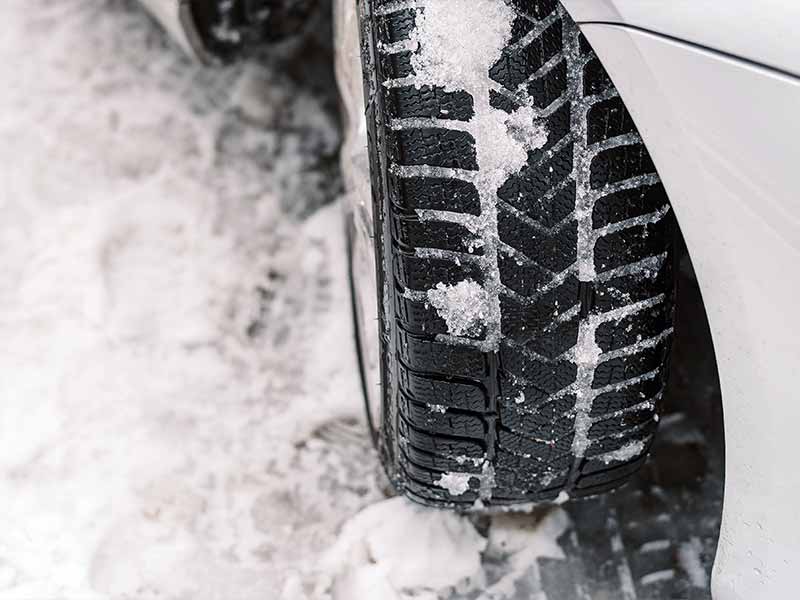Are you considering using chains instead of snow tires for winter driving? Discover the essential facts and considerations you need to know before making that decision.
Can I Use Chains Instead Of Snow Tires?
No, tire chains are not a substitute for snow tires. Snow chains can provide added traction in certain conditions, but are inappropriate for lighter snow or dry pavement.
Specialized snow tires offer superior performance and safety in harsh winter weather although they can benefit from chains in extreme winter conditions.
In this article, I’ll delve into the critical aspects of snow tires versus chains, examining their differences, benefits, and when each is most suitable. We’ll explore the necessity of snow tires, how they compare to all-season tires, the role of snow chains, and how different vehicle drivetrains affect the need for specialized tires.
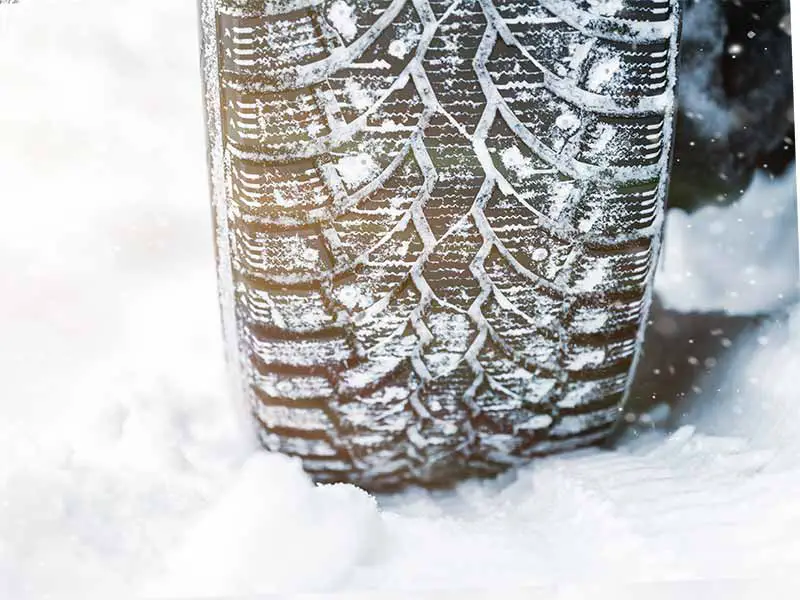
What Are Snow Tires?
Snow tires, also known as winter tires, are specially designed rubber wheels engineered to perform optimally in cold temperatures and adverse weather conditions. They are crafted with unique rubber compounds that remain flexible even in freezing temperatures, providing better traction and grip on snowy, icy, or wet roads. These tires boast deeper tread patterns with specific grooves and sipes (tiny slits) to bite into snow and expel water, enhancing traction and reducing the risk of hydroplaning.
How Snow Tires Differ from All-Season Tires
Now, you might wonder how snow tires stack up against all-season tires. All-season tires are versatile and suitable for various conditions, including light snow. However, when facing harsh winters, the difference becomes apparent. Snow tires outperform all-season tires in extremely cold weather and icy or snowy terrains due to their specialized design. All-season tires may stiffen in freezing temperatures, reducing their ability to grip the road effectively.
The Three-Peak Mountain Snowflake Symbol
When shopping for snow tires, keep an eye out for the Three-Peak Mountain Snowflake symbol. This symbol signifies that the tire has met specific industry standards for winter traction performance. It’s an assurance that the tire is designed to handle severe snow conditions, making it a reliable choice for navigating through harsh winter landscapes.
Benefits of Snow Tires in Challenging Conditions
Snow tires truly shine in challenging conditions. Their softer rubber remains pliable in freezing temperatures, ensuring a more comfortable grip on snow-covered or icy roads. The deeper tread pattern and unique design elements help evacuate snow, slush, and water, maintaining better contact with the road surface. This increased traction significantly enhances braking and handling, reducing the risk of accidents in winter weather.
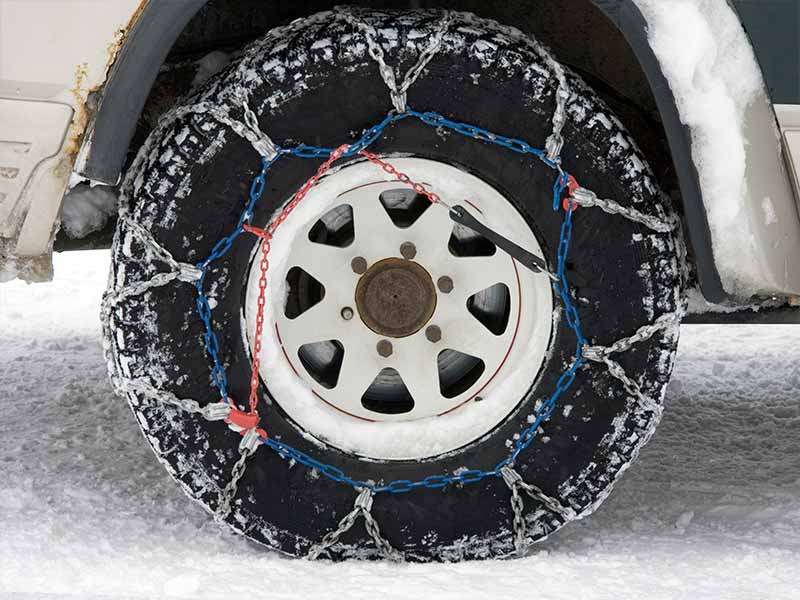
Do You Still Need Chains With Snow Tires?
In my experience, while snow tires significantly improve winter driving safety, there are situations where adding snow chains becomes a helpful addition. Understanding when and how to use snow chains in conjunction with snow tires ensures maximum traction and control in the most challenging winter conditions.
Let’s dive deeper into the relationship between snow tires and snow chains to unravel their roles in ensuring safe winter travels.
Understanding Snow Chains
Snow chains, also known as tire chains, are supplemental traction devices consisting of metal links that attach to your vehicle’s tires. These chains enhance grip and traction on snow-packed or icy roads, providing added security when driving in severe winter conditions. They are particularly useful in areas with stringent chain requirements or when facing extremely treacherous road conditions.
Complementing Snow Tires with Snow Chains
While snow tires offer superior traction in most winter scenarios, there are instances where adding snow chains becomes necessary. In extremely deep snow or on steep icy inclines, snow chains provide an extra layer of grip and control. Even with snow tires, encountering exceptionally harsh conditions like heavily packed snow or icy roads might warrant the use of snow chains for added safety and stability.
Compatibility of Snow Tires and Chains
It’s essential to ensure compatibility between snow tires and snow chains. Some vehicles or tire setups might not accommodate chains due to limited clearance between the tire and vehicle components. Checking your vehicle’s manual or consulting with a tire professional can guide you in selecting the right snow chains that won’t interfere with your snow tire setup.
Studded Snow Tires and Snow Chains
Studded snow tires, which feature metal studs embedded in the tire tread, offer enhanced traction on ice. However, in many regions, there are specific regulations regarding the use of studded tires or chains. Always familiarize yourself with local laws and guidelines to ensure compliance when using studded tires or chains in your area.
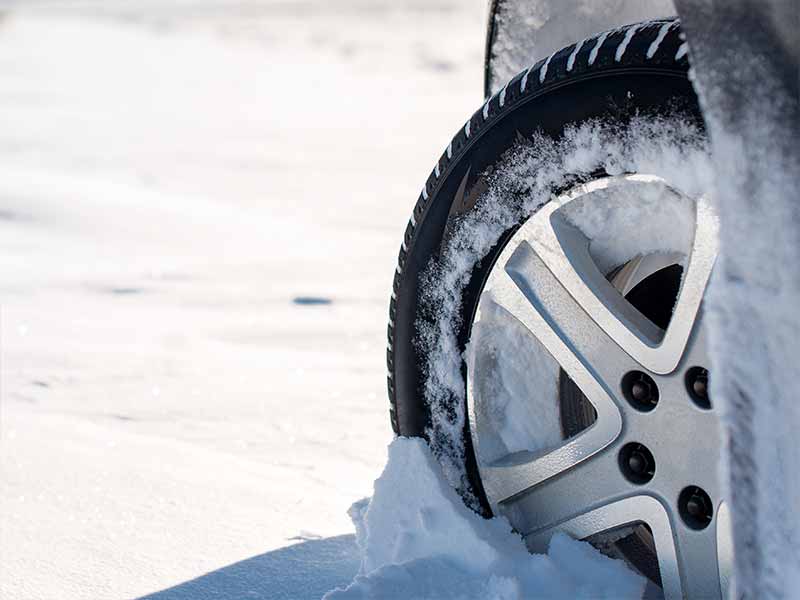
Impact of Vehicle Drivetrain on Tire Choice
The drivetrain of your vehicle influences its handling in snow, but regardless of the drivetrain type, equipping your vehicle with snow tires significantly enhances safety and control. Proper tire selection, combined with understanding your vehicle’s drivetrain, is key to ensuring a secure and confident drive during winter.
Let’s explore how different drivetrains—front-wheel drive (FWD), rear-wheel drive (RWD), and all-wheel drive (AWD)—influence the necessity and performance of snow tires.
Front-Wheel Drive (FWD) Vehicles
FWD vehicles primarily rely on the front wheels to propel the car forward. While FWD vehicles generally offer better traction in snow compared to RWD, they can still benefit significantly from snow tires. The additional grip provided by snow tires enhances acceleration, braking, and cornering, ensuring safer travels in snowy conditions.
Rear-Wheel Drive (RWD) Vehicles
RWD vehicles direct power to the rear wheels, which can make them more challenging to handle in snow and icy conditions compared to FWD or AWD vehicles. Snow tires are particularly beneficial for RWD vehicles, significantly improving traction and control, especially when navigating through snow-covered or slippery roads.
All-Wheel Drive (AWD) Vehicles
AWD vehicles distribute power to all four wheels, offering enhanced traction and stability, especially during acceleration. While AWD provides better overall handling in snow, equipping these vehicles with snow tires further elevates their performance, significantly improving braking and cornering in severe winter conditions.
Misconceptions about Drivetrains and Snow Tires
There’s a common misconception that AWD vehicles don’t require snow tires due to their enhanced traction. However, while AWD offers better traction on all surfaces, including snow, it doesn’t necessarily substitute for the benefits of specialized snow tires in harsh winter conditions.
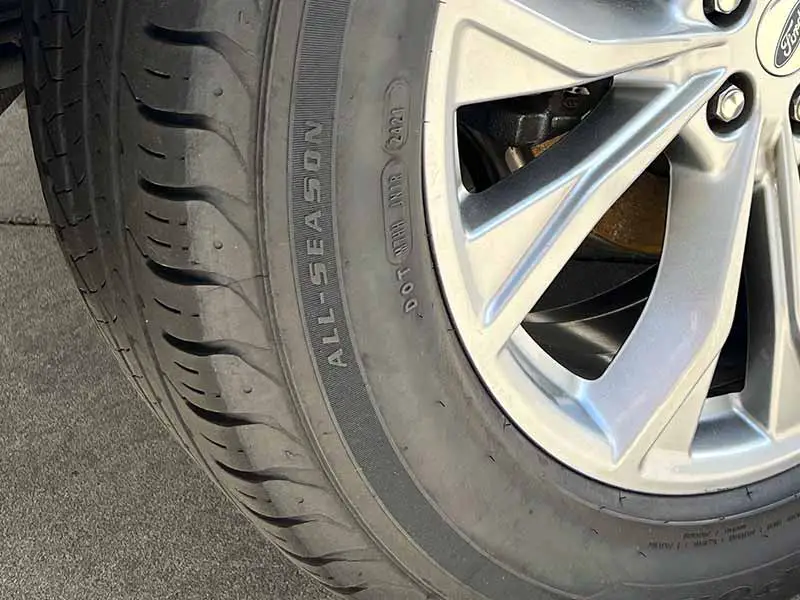
Snow Tires vs. All-Season Tires
While all-season tires offer versatility, they may not match the superior performance of snow tires in extreme winter conditions. Investing in dedicated snow tires significantly improves safety and control when navigating through severe snow and icy terrains, prioritizing safety during harsh winter months.
Understanding how these tires perform in different conditions can help make informed decisions for safer travels.
Snow Tires: Specialized for Winter Conditions
Snow tires, specifically engineered for cold temperatures and snowy, icy roads, offer superior traction in harsh winter conditions. Their unique rubber compounds and tread designs ensure flexibility in freezing temperatures, providing enhanced grip and braking on snow-covered or icy surfaces. This specialized construction significantly improves handling and control when compared to all-season tires.
All-Season Tires: Versatility in Moderate Conditions
All-season tires are designed to provide adequate performance in various weather conditions, including light snow. They offer a balance between dry and wet performance, suitable for mild winter climates. However, when facing severe winter conditions or extreme cold, their performance might decline compared to dedicated snow tires.
Performance Differences in Winter Conditions
In deep snow, icy roads, or extremely cold temperatures, snow tires outshine all-season tires. The deeper treads, specialized compounds, and unique designs of snow tires significantly improve traction, handling, and braking, ensuring safer travels during harsh winters. All-season tires, while versatile, may struggle to provide the same level of grip and control in severe winter conditions.
Importance of Three-Peak Mountain Snowflake Symbol
The Three-Peak Mountain Snowflake symbol serves as a reliable indicator that a tire meets specific winter performance standards. Snow tires adorned with this symbol signify their ability to handle severe snow conditions, providing a sense of confidence and safety when driving in harsh winter landscapes.
Resources
Below are some links you may find helpful when learning about tires:
Final Thoughts
Specialized snow tires, engineered with specific rubber compounds and tread designs, offer superior traction and control on snow-covered and icy roads. While snow chains can complement snow tires in extreme conditions, the unparalleled performance of dedicated snow tires remains unmatched.
Investing in proper winter tires greatly enhances safety, providing peace of mind during challenging winter months. Prioritize safety by choosing the right tires for winter driving, ensuring you have the best possible traction when navigating through harsh weather conditions.
Good luck and happy motoring.
